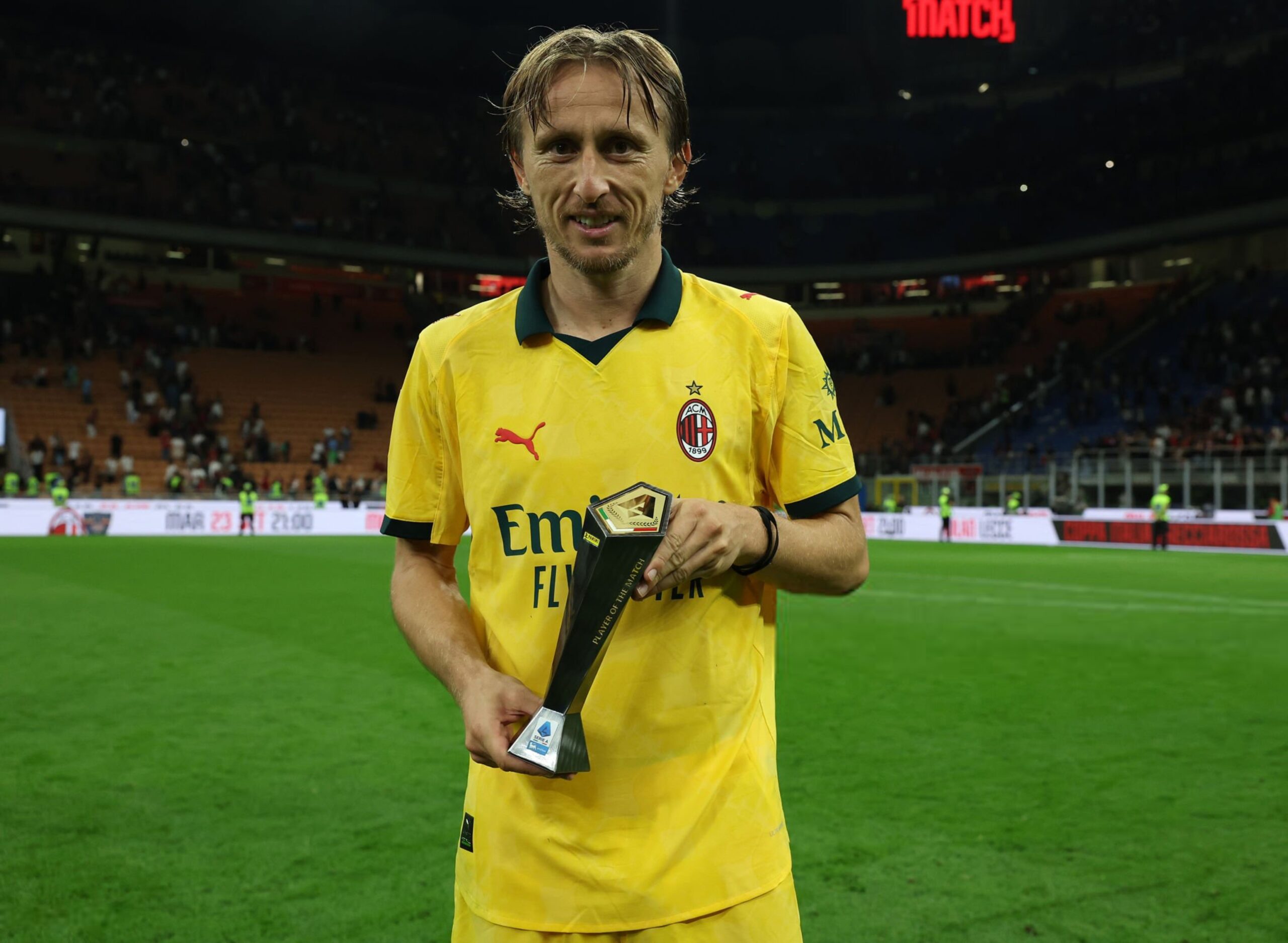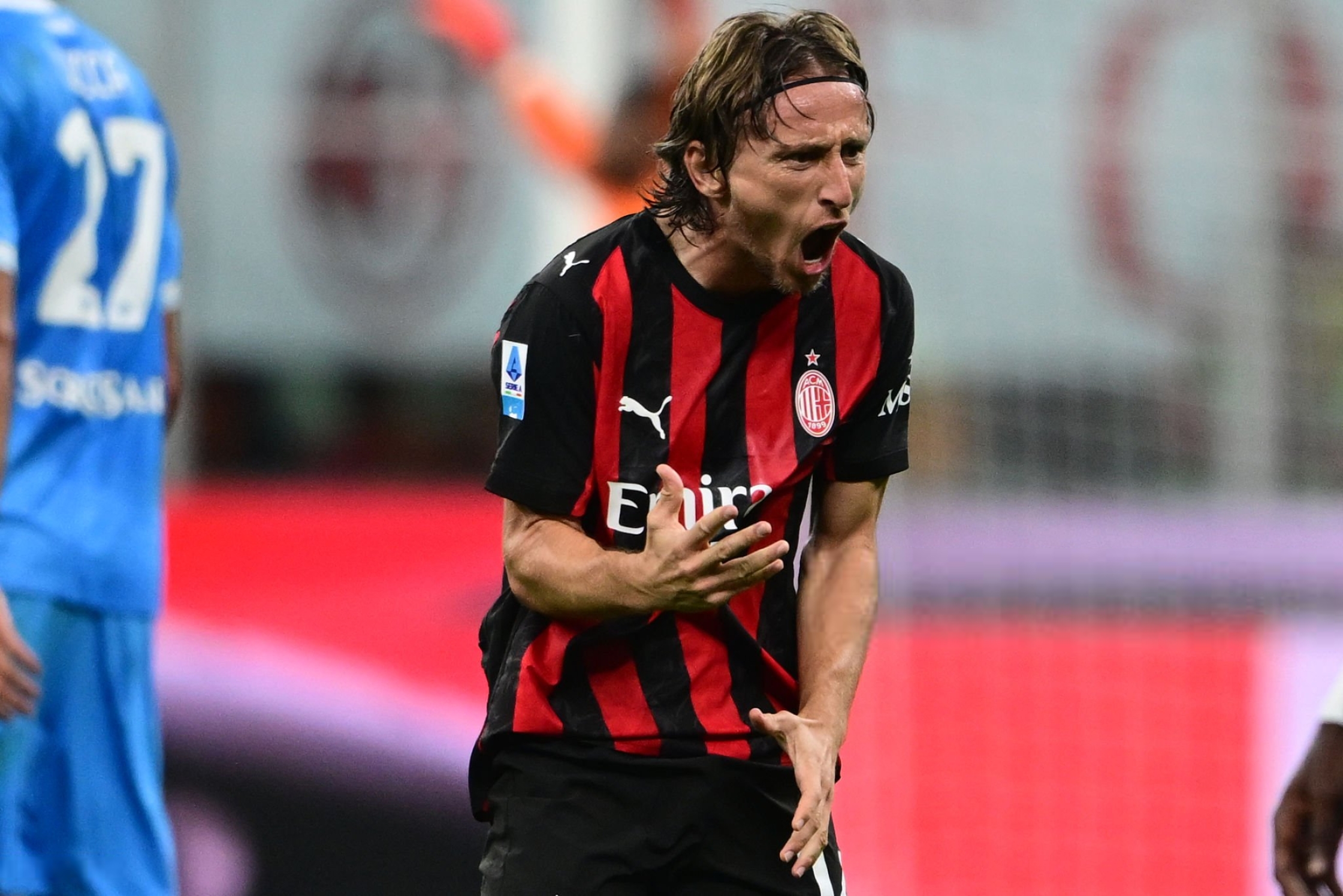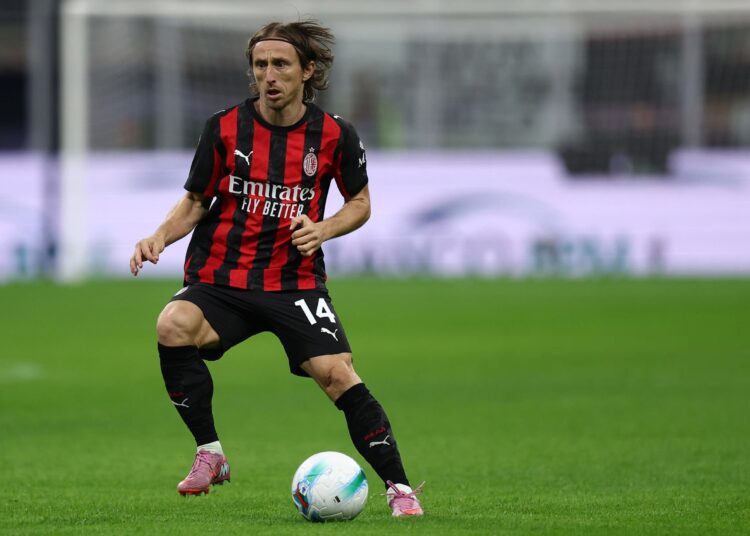Forty years old is the age limit for several public competitions in Italy. Generally, at that threshold, the body’s biological mechanisms begin, or have already begun, to change. For many, it’s a crossing point: on one side, youth, with the gaze turned forward; once past it, however, analysis and reflection on the path taken begin to clutter the mind (with all that follows).
At forty, though, in Italy you can still feel young. Not only statistically, given the average age of 46.8 years in the country. All the more so if you’re Luka Modric, able to sit before a valley of 5-3-2s, or something close to it, and sketch the landscape as you please.
AC Milan’s next match will be against Parma this weekend. But while waiting eagerly to see Modric on the pitch again, many fans are choosing to pass the time online while possibly winning some interesting bonuses. We are talking about the classic plinko slot game and its easy layout.
As for Modric, in the end, all it takes is the ball and a heartbeat of time:
That’s what Serie A willingly grants him, so long as he stays a safe distance from its own goal: no player in Italy has touched the ball more, 719 times, to be exact, than the former Real Madrid man so far. Of this vast quantity of touches, more than half (444) naturally came in the central third of the pitch, his main domain. The rest were split evenly between the first and final thirds, highlighting the positional mobility that has produced an extraordinary heatmap over his first nine Serie A matches.
Modric has been one of the best players in Serie A at the start of this season. Despite his stellar résumé, his impact in Italy has still surprised us. We’ve seen it either as a sign of decline in our football, or as proof of the Croat’s ageless athletic condition, the resilience of a talent untouched by time, preserved by fierce motivation and a mentality everyone describes as unique. All good reasons to explain Modric’s incredible start to the season, but there’s more.
In the Croatian champion’s effectiveness, we can also discern, in the background, some of Serie A’s traits. Being the champion he is, Modric recognized them instantly and exploited them to his advantage. Above all, he had the merit of choosing where to land. Unlike what happens increasingly often, Milan doesn’t employ rigid structures or strict principles for advancing the ball.
That interpretive freedom which Allegri gladly grants his most gifted players allows Modric to position himself on the pitch wherever he sees fit. Starting as the deep pivot in a three-man midfield, he often drops freely to polish Milan’s ball progression. Except for goal kicks, which now almost resemble set pieces, few teams press man-to-man, and even fewer can consistently hold a medium-high line while pressing with numerical inferiority (-1 or -2). In this all-or-nothing scenario, defensive blocks often get sucked deep, sitting in prolonged positional phases. It’s there that Modric seems to pull up a stool and begin painting the scenery before him. Last week gave him two extremes: Atalanta midweek, universally known for its pressing, shrunk his rhythm to a minimum. Sixty-one touches: his lowest total of the season, matching the third round against a similar example, Italiano’s Bologna. That match also saw him record his lowest progressive passing score, struggling to play forward under Pasalic’s pressing and Milan’s limited collective ability to receive or play under pressure. An early 3rd-minute lead further reduced Milan’s need for the ball as a tool.

Dropping deeper on Wednesday night didn’t change much, with Pasalic always ready to follow him. Even positional swaps with Ricci, moving wide, didn’t earn him or his teammates that precious extra time needed to advance the ball without going long: Atalanta, as shown above, were reactive in switching marks, Modric would fall into Ederson’s coverage while Pasalic then handled Ricci.
Much more manageable, instead, was Pisa’s pressing the previous weekend. Tramoni, initially tasked with disturbing his play, couldn’t cope with Modric’s mobility when he drifted away from his zone. Moreover, Gilardino’s strategy freed up the right channel, where De Winter could advance easily, pushing Pisa back and giving Modric the freedom to receive from his preferred angle.
Modric is one step before everyone on the pitch:
In one instance, for example, he settles in the right half-space, spots Ricci between the lines, and upon receiving, hits him with an outside-foot pass, already a trademark luxury option early this season. Modric touched the ball 113 times against Pisa, an enormous figure, including 44 passes in the final third, the highest single-game total in Serie A so far. A ball and a beat of time: that’s all he needs.
It almost seems that the unfamiliarity with unpredictability, the hallmark of the most talented players, leaves Italian teams particularly exposed to Modric’s vertical plays. As if they truly don’t grasp his potential. They don’t expect that a player, without giving hints through body shape or orientation, can produce such passes. These are side effects of the standardization of play, both technically and, even more so, in intention. It’s on this basis that Modric’s abilities shine brighter, much like Totti’s did at the end of his career, a player Modric has never hidden his admiration for, as relayed via Ultimo Uomo.
There were already psychedelic compilations of the former Roma No. 10’s “blind” passes; “the cross-ball” had entered football vocabulary thanks to Spalletti; everyone admired his use of the backheel, yet his repertoire remained unreadable even in the twilight of his career, despite minimal mobility. Likewise, Modric’s use of the entire surface of his foot has stood out in Serie A for weeks, should anyone have missed studying it in the past twenty years or so.
In Udine, in Milan’s fourth league match, he suddenly gave meaning to a high build-up like this: receiving alone through a third-man combination, gathering information as the ball arrived, executing. Outside-foot again, behind the defensive line, unveiling the depth run by Estupiñán. No Udinese defender, as seen in the third image below, showed alarm in posture or attitude as if no one knew who that number 14 was.
Here we see what lets Modric play two beats ahead of everyone else. The technical act is merely the finale, revealing the deception when it’s already too late to react. The decisive element is his reading ability, turning his head as the ball approaches: that’s where he gains his crucial edge. This “scanning” ability, constant perception of his surroundings, is the foundation for his coordination and, thus, his technical execution. In the end, movement and behavior always serve a purpose, one Modric visualizes faster than anyone.
Below we leave a string of such moments, one for each Serie A match so far, to illustrate how the mind of a genius works. And how Modric could play through any muscle discomfort, so long as it’s not a stiff neck. This also explains why he’s the outfield player in Serie A with the greatest progressive distance toward goal achieved through passing.
In Italy, this constant spatial awareness is amplified by the time and space allowed by teams that often collapse behind the ball. This lets Modric, when he drops deep, tune his instrument as he pleases. Matches against teams that lack the will or ability to sustain aggressive pressing are common; this slows the tempo, stabilizing the rhythm of play and lengthening opponent transitions. In many cases, it’s simply about timing and trajectory, finding the right way into the opponent’s structure.
The passivity during defensive phases has also allowed him to carve out receiving spaces between defensive lines. But to maintain or enhance this vertical as well as horizontal positioning, Milan will eventually need more autonomy in their first build-up. Ricci can help in that regard. Against Fiorentina came a vivid example of how Modric can profitably step into more advanced zones, provided Ricci, or whoever plays that role, anchors the build-up and the center-backs grow more accustomed to breaking the first pressing lines.
In that Fiorentina match, Modric also applied his anticipatory skill defensively, positioning or even marking preemptively as Milan’s center-backs carried the ball forward. His ability to foresee opponents’ intentions translates into a high number of recoveries: 25 balls won, fourth among Serie A midfielders, behind only specialists like Masini, Frendrup, and Ramadani. Eleven of those came via interceptions, again, fourth among Serie A midfielders.
Conclusion:
All this footballing wisdom is watered by a burning passion, heightened by his awareness of time passing. Modric seems intent on savoring the pleasure of handling the ball to its last drop. Just look at how he lives and drives Milan (even in off-ball phases) like in the Fiorentina comeback. As for how, at forty, he remains so competitive, he tried to answer in a recent CBS Sports interview: "It's just love for football. I really love football." And love, as they say, has no age.
















